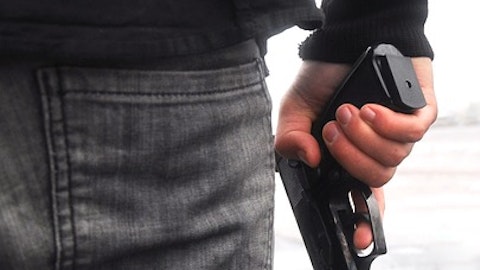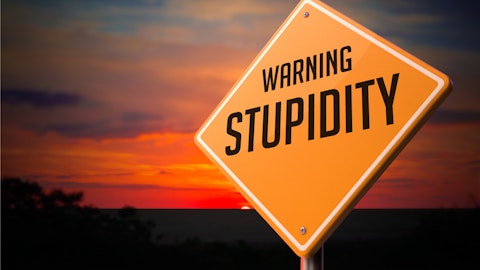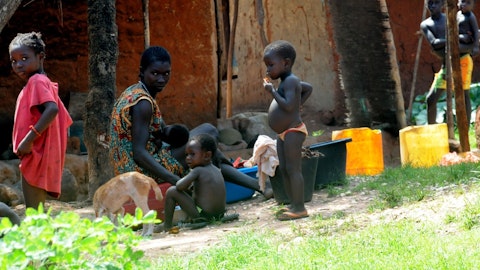In this article, we will take a look at the 15 biggest drug cartels in the world.
While drug cartel stories have become a staple in Hollywood’s entertainment repertoire, it’s important to recognize that these criminal organizations are far from mere fictional tales. Drug cartels exist in reality, and some continue to operate within the United States today. Over the course of a few decades, certain drug cartels have left an indelible mark in history with their extensive criminal activities, their remarkable ability to evade law enforcement, and the staggering profits they have amassed, contributing to their astonishing net worth. A pack of dealers doesn’t constitute a cartel. Rather, a cartel represents an expansive criminal entity involved in drug trafficking, with the aim of establishing a sprawling network of individuals within a commercial empire. These organizations expand their criminal enterprises beyond state boundaries, evolving into global entities with a net worth amounting to billions.
Mind-altering substances, ranging from alcohol to narcotics to synthetic marijuana, originate from various corners of the world. They encompass chemicals manufactured in China, plants cultivated in Afghanistan, and home-brewed stimulants clandestinely concocted in the United States. A significant share of these substances, whether illicit or prescription, is consumed by Americans. Surprisingly, most of these drugs are not domestically produced within the United States. In reality, the responsibility for smuggling illegal drugs across the border and into the U.S. falls on drug cartels primarily based in Central and South America.
The U.S. war on drugs traces its origins back to the administration of President Richard Nixon. Following his electoral victory in the 1968 presidential election, Nixon declared that drug abuse constituted “public enemy number one.” The efforts to impede the inflow of illegal drugs into the United States, which served as the primary destination for most narcotics, increasingly concentrated on suppressing the foreign production of marijuana and heroin. However, it was during the 1970s that the mounting U.S. demand for cocaine played a pivotal role in the emergence of the earliest drug cartels.
Organized criminal syndicates across Asia, Africa, Italy, and the former Soviet Union have been implicated in the illicit drug trade, involving both sales and production. The trafficking and distribution of Ecstasy are chiefly overseen by Israeli, Russian, and Western European drug traffickers. Criminal entities based in Southeast and Southwestern Asia utilize New York City as a central hub for smuggling heroin into the United States. Marijuana distribution from Southeast Asia is predominantly confined to the West Coast, although it also finds its way into the United States from Canada.
The conclusion of the Cold War marked a significant shift in the language employed in the fight against drugs. A new focus on terrorism brought about a shift in terminology, introducing the concept of narco-terrorist organizations. These entities were characterized as organized groups engaging in drug trafficking to finance politically motivated acts of terrorism. The U.S. Drug Enforcement Administration (DEA) contended that Afghanistan, during the Taliban’s reign, exemplified a state funded by illicit opium production. However, regional experts argued that the Taliban’s stringent Islamic rule had essentially eradicated opium production. It was only after the U.S. invasion in late 2001, toppling the Taliban regime, that Afghan opium production began to surge once again.
In hindsight, leaders of drug cartels have been retroactively classified by the DEA as narco-terrorists. For instance, figures like Pablo Escobar of the Medellín cartel are now described as having committed “terrorist activities,” including the bombing of a commercial airliner in 1989. Escobar was also responsible for the assassinations of politicians, presidential candidates, police officers, journalists, and even Colombian Supreme Court justices.
According to Forbes, one of the most famous, wealthiest, and biggest drug lords at present is Joaquín “El Chapo” Guzmán from Mexico, who leads the Sinaloa Cartel with a net worth of US$12 billion. Personally, he has amassed an estimated wealth of approximately US$1 billion through his involvement in drug trafficking. Guzmán is considered the most infamous drug kingpin in history, as acknowledged by the U.S. Drug Enforcement Administration. The United States Intelligence Community typically regards the Sinaloa Cartel as the most dangerous cartel in the world, surpassing even the infamous Medellín Cartel led by Pablo Escobar during its heyday. According to assessments from the National Drug Intelligence Center and other U.S. sources, the Sinaloa Cartel primarily focuses on the distribution of various narcotics, including cocaine, heroin, methamphetamine, fentanyl, and cannabis.

NEstudio/Shutterstock.com
Our Methodology
In the process of creating our list of the 15 biggest drug cartels in the world, we conducted thorough and in-depth research, drawing information from a diverse and reputable array of 12 sources. Our initial step involved identifying more than 30 cartels mentioned within these sources. Whenever a cartel was referenced with specific metrics regarding its scale and influence in terms of popularity and drug trade, we organized this data and assigned corresponding points. This rigorous data analysis led us to our compilation of the 15 biggest drug cartels in the world.
15 Biggest Drug Cartels in the World
15. La Familia Michoacana Cartel
Ranking 15th in our list of the biggest drug cartels in the world is the La Familia Michoacana cartel. La Familia Michoacana is a Mexican drug cartel and organized criminal group rooted in the Mexican state of Michoacán. They are recognized for their substantial methamphetamine production within covert laboratories located in Michoacán. La Familia Michoacana distinguished itself from other Mexican cartels by incorporating a pseudo-religious ideology into their operations.
14. Abergil Family Cartel
The Abergil Crime Family is a globally dispersed organized criminal syndicate originating in Israel. This criminal organization, known as the Abergil Organization, has been active since the late 20th century and into the early 21st century. The Abergils have faced convictions related to multiple instances of murder and assassination.
13. Ndrangheta Cartel
The Ndrangheta cartel ranks 13th in our list of the biggest drug cartels in the world. The Ndrangheta is a well-known organized crime syndicate of Mafia origins, originating in the Calabria region of Italy with roots tracing back to the 18th century. It stands as one of the most influential organized crime entities globally. At present, their operations extend across the world, reaching into at least 31 other countries.
12. Solntsevskaya Bratva Cartel
Ranking 12th in our list of the biggest drug cartels in the world is the Solntsevskaya Bratva cartel. The Solntsevskaya Bratva, led by Sergei “Mikhas” Mikhailov, stands as Russia’s largest criminal organization, comprising around 5,000 members, and takes its name from the Solntsevo District. Towards the end of the 1990s, the Solntsevskaya gang began to expand its presence in the banking sector. This strategic move not only facilitated money laundering but also brought them into proximity with the oligarchs.
11. Yamaguchi-Gumi Cartel
Yamaguchi-Gumi holds the distinction of being Japan’s largest yakuza group, taking its name from its founder, Harukichi Yamaguchi. Its origins can be traced to a loose labor union for dockworkers in Kobe prior to World War II. As of the end of 2022, it stood as one of the largest active criminal organizations globally, boasting approximately 3,800 active members. The Yamaguchi-gumi ranks among the world’s wealthiest criminal entities, amassing billions of dollars annually through activities such as extortion, gambling, involvement in the sex industry, arms and drug trafficking, real estate, and construction kickback schemes. They also dabble in stock market manipulation and the production of pornography.
10. Guadalajara Cartel
The Guadalajara cartel landed in the 10th spot in our list of the biggest drug cartels in the world. The Guadalajara Cartel was a complex criminal network characterized by family ties and an absence of a clear leadership hierarchy. This group reportedly dominated the Mexican drug market for nearly a decade, starting in the early 1980s. It was believed to have formed an alleged alliance with high-ranking police officers and politicians. Its pervasive influence in contemporary history has rarely been questioned until now. Recent studies suggest that it operated as a quasi-family-run enterprise, failing to achieve vertical integration of its drug production, transportation, and marketing processes. Furthermore, it lacked well-defined rules for its members and did not establish a hierarchical structure for making consensual decisions.
9. Beltran Leyva Cartel
The Beltran Leyva Organization was established by 4 biological brothers namely, Alfredo, Marcos Arturo, Héctor, and Carlos. These brothers initially began their operations as poppy farmers in the state of Sinaloa. Concurrently, they also assumed the roles of security personnel and enforcers for the Sinaloa OCG and Joaquín “El Chapo” Guzmán Loera. Under the leadership of the Beltrán Leyva brothers, this Mexican drug trafficking syndicate collaborated with the Sinaloa Cartel before a violent rupture in 2008 led to a bitter conflict. Once among Mexico’s most influential groups, the Beltrán Leyva Organization (BLO) is now extinct, owing to a series of arrests and assassinations.
8. Cali Cartel
Ranking 8th in our list of the biggest drug cartels in the world is the Cali cartel. The Cali cartel was a prominent drug syndicate in southern Colombia, particularly in the vicinity of Cali and the Valle del Cauca region. It was established by the Rodriguez Orejuela brothers, namely Gilberto Rodríguez Orejuela, Miguel Rodríguez Orejuela, and José Santacruz Londoño. Their separation from Pablo Escobar and the Medellín associates occurred in 1988, with the inclusion of Hélmer “Pacho” Herrera, resulting in a four-man executive board that oversaw the cartel’s operations. At the peak of Cali Cartel’s dominance, spanning from 1993 to 1995, they were recognized for exerting control over more than 80% of the global cocaine market. Their influence extended to the expansion of the cocaine market in Europe, where they commanded a similar 80% share. By the mid-1990s, the leaders of the Cali Cartel had built a criminal empire generating billions of dollars annually.
7. Jalisco New Generation Cartel
The Jalisco New Generation cartel is a criminal organization that has evolved through a series of assassinations, arrests, and internal conflicts within older cartels. It has gained notoriety for its aggressive use of violence and its public relations campaigns. Despite the capture of high-ranking leaders, the group continues to operate. As of 2020, the Mexican government generally regards the Jalisco New Generation cartel as the most dangerous criminal group in Mexico, ranking second only to the Sinaloa Cartel in terms of drug cartel power in the country. The Jalisco New Generation cartel is heavily militarized and exhibits a higher level of violence compared to other criminal organizations. It maintains a specialized operations unit and other divisions tailored for various forms of warfare.
6. Tijuana Cartel
The Tijuana cartel was able to secure the 6th spot in our list of the biggest drug cartels in the world. The Tijuana Cartel, also recognized as the Arellano Felix Cartel, is rooted in one of the most strategically significant Mexican border cities for drug trafficking into the United States. Owing to internal conflicts, apprehensions, and the demise of numerous high-ranking leaders, the group has been reduced to a mere shadow of its former self in the 1990s and early 2000s, when it held the status of being one of Mexico’s most formidable and violent criminal organizations. The Tijuana Cartel has deeply infiltrated both the Mexican law enforcement and judicial systems and is directly engaged in street-level drug trafficking operations within the United States. This criminal syndicate shoulders the responsibility for the transportation, importation, and dissemination of large quantities of cocaine, marijuana, heroin, and methamphetamine, often reaching multi-ton levels.
5. Los Zetas Cartel
The Los Zetas cartel ranks 5th in our list of the biggest drug cartels in the world. Los Zetas, originally established in 1997 as the enforcement arm of the drug-trafficking Gulf Cartel, later gained independence as a self-sustained organized criminal entity in 2010. The group was notorious for its brutal tactics and tightly-knit organizational framework. The emergence and progression of Los Zetas can be seen as a consequence and a driving force behind the escalation of militarization in the Mexican drug conflicts. As the competition among major trafficking groups intensified in the early 21st century, confrontations between traffickers and law enforcement, including the police and military, grew more frequent. Los Zetas played a central role in much of this violence.

wavebreakmedia/Shutterstock.com





